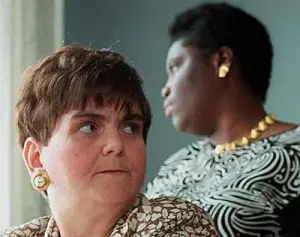That date is one of the most important in the history of American disability rights. On June 22, 1999 the United States Supreme Court issued a decision that would profoundly shape where and how people with intellectual and developmental disabilities could live their lives.

Lois Curtis and Elaine Wilson were two women with developmental disabilities and mental health support needs. They cycled in and out of hospitals in Georgia because they didn't have the supports necessary to live independently. They asked the State of Georgia to help them live in their community instead of an institution, and the State agreed.
Nonetheless, Lois Curtis and Elaine Wilson remained in the hospital for several years due to lack of funding for community settings. With the assistance of the Atlanta Legal Aid Society, Curtis and Wilson sued the State of Georgia, and their case went all the way to the US Supreme Court.
The majority decision was written by Justice Ruth Bader Ginsburg. She stated that the unnecessary institutionalization of people with disabilities constituted illegal discrimination under the Americans with Disabilities Act (ADA).

Lois Curtis and Elaine Wilson paved the way for others to lead productive lives in communities they chose. Lois Curtis became a self-taught artist focusing on portraits and continues to produce paintings today. At the twelfth anniversary of the Olmstead decision she visited President Barack Obama at the White House and presented him with an original portrait.
The Olmstead Decision is the reason why Rutgers' Community Living Education Project is able to help people explore community living options and connect people with provider agencies to serve them in community settings.
For a great explanation of the events leading up to the Olmstead Decision and what the ruling continues to mean to the disability rights movement, check out this video from Disability Rights Washington.
